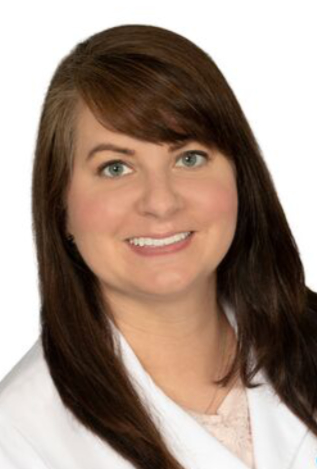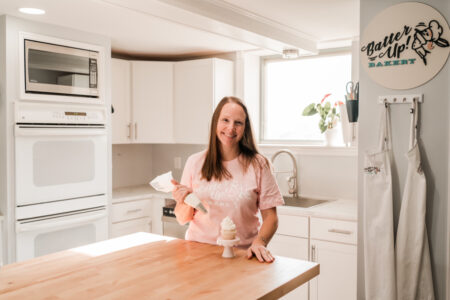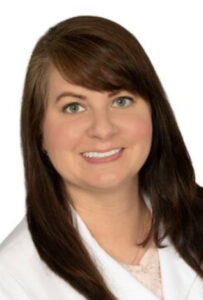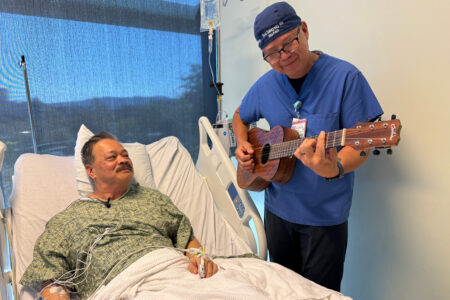What does it mean to have dense breast tissue? Breasts come in all shapes and sizes — and densities. Here’s what to know

You probably know that regular mammograms can find cancer when it’s too small to be felt as a lump. And finding cancer when it’s small, before it has the chance to spread, means easier treatment with greater success.
But mammograms can also tell you whether you have dense breast tissue and may benefit from additional screening. But what does that mean?
In simplest terms, it refers to the way your breast tissue appears on a mammogram. Having dense breasts is common and completely normal. Almost half of women aged 40 and older have dense breasts.
But it’s still important to know your breast density because it can impact screening practices and your overall breast health — mammograms alone may not be enough to detect breast cancer.
What is dense breast tissue? Your breasts are made up of two types of tissue:
— Fibroglandular tissue made up of: Milk glands/ducts (glandular tissue); Supportive fibrous tissue to hold your breasts in place
— Fatty breast tissue
Women’s breasts vary in the percentage of fatty tissue versus fibroglandular tissue. So, breast density is categorized into four levels:
— Mostly fatty tissue (least dense)
— Scattered fibroglandular density (mostly fatty with some dense tissue)
— Heterogeneously dense (mostly dense with some fatty tissue)
— Extremely dense (mostly dense tissue)
If your breast tissue is heterogeneously dense or extremely dense, you have dense breasts. This means more than half your breast tissue is made up of glandular and fibrous tissue compared to fatty tissue.
You can’t tell if you have dense breast tissue based on how they look and feel. Only imaging tests can reveal it.
What causes dense breast tissue? You’re more likely to have dense breast tissue if you:
— Have a genetic tendency
— Are younger than age 50
— Have a lower body weight or BMI
— Take hormone replacement therapy
— Are pregnant or breastfeeding
The density of your breasts can change over time. So even if you have dense breast tissue now, you may not in the future.
Hormonal changes during menstrual cycles, pregnancy and menopause can impact breast density. Pregnancy often leads to denser breast tissue, while postmenopausal women typically see a reduction in density due to hormonal shifts.
What does having dense
breast tissue mean?
Having dense breast tissue means you have a higher risk of developing breast cancer. So, it’s even more important to get regular mammograms — though your provider might recommend supplemental screening methods, as well, for a comprehensive evaluation.
Breast cancer can go undetected by a 2D mammogram, since dense breast tissue can mask the cancer — both dense breast tissue and tumors appear white on mammograms. Predominantly fatty tissue, however, appears dark on mammograms, so detection of abnormalities is easier.
Having additional imaging lets doctors take a closer look. Other images they may order include:
— 3D mammogram: This advanced test uses X-rays to collect multiple images of the breast from different angles. A computer combines them to form a 3D image of your breast.
— Breast ultrasound: An ultrasound uses sound waves to take detailed, 3D pictures of your breasts and can help differentiate between solid and fluid lumps.
— Breast MRI: This test uses magnets to create detailed 3D images of your breasts and may detect smaller cancers than a traditional mammogram. Breast MRIs are typically recommended for women with dense breasts and a higher risk for breast cancer.
Often, follow-up imaging after the regular screening mammogram will show nothing of concern. But it’s important to have these tests done in case there is cancer present. Finding cancer early means it will be easier to treat and can improve outcomes.
Dense breast tissue:
Knowledge is power
Breast cancer often starts in the fibroglandular tissue, so the more you have, the greater your risk. Unfortunately, this dense tissue masks tumors, leading to delays in diagnosis.
But dense breast tissue is only one risk for breast cancer. Other factors also can increase your chances, including:
— Lifestyle choices, such as drinking alcohol, being overweight or not getting enough physical activity
— Not having children or breastfeeding
— Using hormone replacement therapy to relieve menopause symptoms
— Inherited gene mutations, such as in the BRCA1 and BRCA2 genes
— A family history of breast cancer
If your mammography results show that you have dense breast tissue, start by talking to your healthcare provider about your options. You can work together to take proactive measures so you can achieve your best breast health.
For the latest health and wellness tips and advice, visit geisinger.org/balance.
— — — —
Kayleigh Taylor, MD, works in diagnostic radiology at Geisinger.



